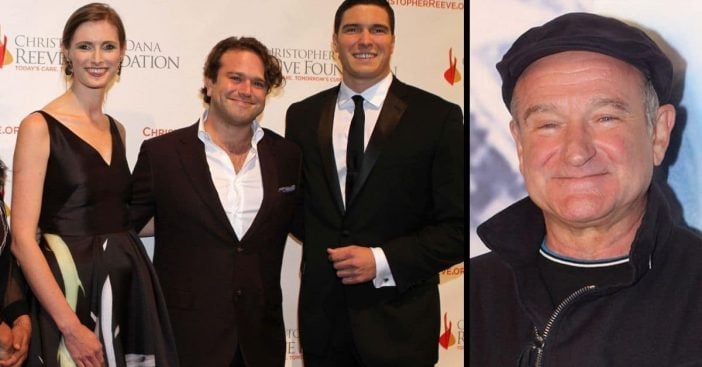
Often, those who spread smiles secretly don’t have reason to themselves. This comes from a wide variety of environmental and biological factors that can leave a person waging a silent war within. For this reason, Zak Williams posted a tribute to his late father Robin Williams. In his post, he also shared a very important message. Last month marked six years since Williams passed on August 11, 2014. Yesterday, September 10, was World Suicide Prevention Day 2020.
Robin Williams died from suicide provoked by Lewy body disease. It exists in an overlooked limbo between Parkinson’s and Alzheimer’s. At the core of the issue, however, exists the debilitating emotions that drive a person to suicide. That became the focus of Zak’s tweet.
A Twitter tribute to Robin Williams
I lost my dad – pictured here as a cheerleader – to suicide in 2014. One of the biggest risks we face in suicide prevention is the fear of the stigma associated with seeking help. To all those who support those in need, THANK YOU. #nationalsuicidepreventionday pic.twitter.com/49FtjCMzjw
— Zak Williams (@zakwilliams) September 11, 2020
“I lost my dad,” Zak Williams wrote in a tweet. “Pictured here as a cheerleader – to suicide in 2014. One of the biggest risks we face in suicide prevention is the fear of the stigma associated with seeking One of the biggest risks we face in suicide prevention is the fear of the stigma associated with seeking help. To all those who support those in need,help. To all those who support those in need, THANK YOU.” He ends it with the tag, #nationalsuicidepreventionday. Following this tag on Twitter shows that the tag is partnered with the Lifeline, which can be reached at the number 1-800-273-TALK. It also offered a link to follow to “Reach Out” if needed. Zak Williams has 18.6 thousand followers on Twitter and his tweet has 80.3 thousand likes, meaning a wide audience read his important message.
RELATED: Robin Williams’ Daughter Zelda Honored Her Late Father On His Birthday By Giving Back
The American Foundation for Suicide Prevention lists statistics related to suicide. It has 1.4 million suicide attempts in 2018 alone. That would be the equivalent of the entire Phoenix population and then some. How can such a vast number not get a lot of attention? Zak Williams said it succinctly: “the fear of the stigma associated with seeking help.” Williams was just one of millions who faced a silent battle because of a discomfort with addressing this fatal condition.
Understanding is at the root of addressing

Stigmas associated with talking about suicide – and seeking help – come from a few areas. That makes the stigmas difficult to pinpoint; they, at least, can’t be blamed on one single thing. For example, people may avoid seeking help because suicidal thoughts could be considered a personal mental failing and there’s already a need for more transparency about mental health in America to begin with. On the other hand, it’s not always rooted in mental health. Not everyone with a mental health disorder has suicidal thoughts and not every suicidal individual has one.
Furthermore, conditions can be difficult to spot. Lewy body dementia, for example, often goes misdiagnosed because it’s so similar to Parkinson’s. People can spot signs something is amiss but can’t pinpoint what at the end of the day. Ultimately, as Zak Williams noted, comfort and transparency are key. They can help combat the shame that prevents people from reaching out or talking about this in helpful ways.
